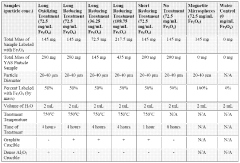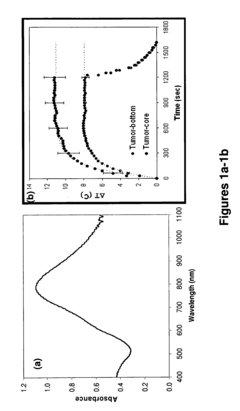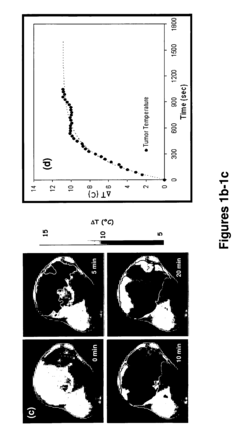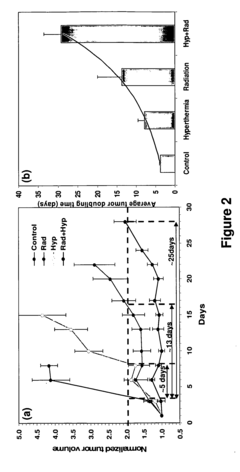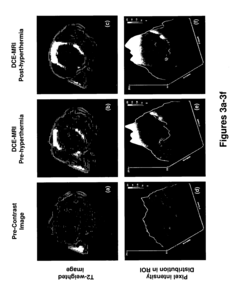Hypertonic Applications in Radiation Therapy: Innovations and Insights
Radiation Therapy Evolution and Hypertonic Goals
Radiation therapy has undergone significant evolution since its inception in the early 20th century. Initially, it relied on rudimentary X-ray machines and radium sources, offering limited precision and effectiveness. The mid-20th century saw the introduction of cobalt-60 teletherapy units and linear accelerators, marking a pivotal shift towards more targeted treatment delivery. These advancements laid the foundation for modern radiation oncology, enabling higher doses to be delivered with greater accuracy.
The late 20th and early 21st centuries witnessed a revolution in radiation therapy techniques. The advent of three-dimensional conformal radiation therapy (3D-CRT) in the 1980s allowed for more precise targeting of tumors while sparing healthy tissues. This was followed by intensity-modulated radiation therapy (IMRT) in the 1990s, which further refined dose distribution by modulating beam intensity. The introduction of image-guided radiation therapy (IGRT) in the 2000s enhanced treatment accuracy by incorporating real-time imaging during therapy sessions.
Recent years have seen the emergence of stereotactic body radiation therapy (SBRT) and proton therapy, pushing the boundaries of precision and effectiveness. These techniques offer the potential for higher dose delivery with minimal damage to surrounding tissues, expanding treatment options for various cancer types.
In this context, hypertonic applications in radiation therapy represent a novel frontier in cancer treatment. The primary goal of incorporating hypertonic solutions is to enhance the efficacy of radiation therapy while minimizing side effects. Hypertonic solutions, typically containing high concentrations of solutes, can alter the tumor microenvironment, potentially making cancer cells more susceptible to radiation damage.
One key objective is to exploit the osmotic effects of hypertonic solutions to improve radiation sensitivity. By inducing cellular dehydration and altering intracellular ion concentrations, hypertonic applications aim to create conditions that amplify the DNA-damaging effects of ionizing radiation. This synergistic approach could lead to more effective tumor control with lower radiation doses, potentially reducing treatment-related toxicities.
Another goal is to leverage hypertonic solutions to enhance drug delivery in combination therapies. The altered tumor physiology induced by hypertonic conditions may facilitate better penetration of chemotherapeutic agents or radiosensitizers, opening avenues for more potent multimodal treatment strategies.
Researchers also aim to utilize hypertonic applications to modulate the tumor microenvironment, potentially overcoming radiation resistance mechanisms. By altering pH levels, oxygen tension, and interstitial fluid pressure within tumors, hypertonic solutions could create conditions more conducive to effective radiation therapy.
Market Analysis for Hypertonic Solutions in Oncology
The market for hypertonic solutions in oncology, particularly in radiation therapy, has been experiencing significant growth and transformation in recent years. This surge is primarily driven by the increasing prevalence of cancer worldwide and the growing adoption of advanced treatment modalities. Hypertonic solutions, known for their ability to enhance the efficacy of radiation therapy, have garnered substantial interest from healthcare providers and pharmaceutical companies alike.
The global oncology market, valued at approximately $158 billion in 2020, is projected to reach $269 billion by 2025, with a compound annual growth rate (CAGR) of 11.2%. Within this broader market, the segment for hypertonic solutions in radiation therapy is showing promising growth potential. Factors contributing to this growth include the rising incidence of cancer, advancements in radiation therapy techniques, and an increasing focus on personalized medicine approaches in oncology.
Geographically, North America currently dominates the market for hypertonic solutions in oncology, followed by Europe and Asia-Pacific. The United States, in particular, holds a significant market share due to its advanced healthcare infrastructure and high healthcare expenditure. However, emerging economies in Asia-Pacific, such as China and India, are expected to witness the fastest growth in the coming years, driven by improving healthcare access and rising cancer awareness.
The market landscape is characterized by a mix of established pharmaceutical companies and innovative startups. Key players in this space are investing heavily in research and development to enhance the efficacy of hypertonic solutions and expand their applications in various cancer types. Collaborations between academic institutions and industry partners are also on the rise, fostering innovation and accelerating the development of novel hypertonic formulations.
One of the key trends shaping the market is the increasing focus on combination therapies. Hypertonic solutions are being explored in conjunction with immunotherapies and targeted therapies, potentially offering synergistic effects and improved patient outcomes. This trend is expected to drive further market growth and open up new opportunities for product development.
Despite the positive outlook, the market faces certain challenges. These include stringent regulatory requirements, high development costs, and the need for extensive clinical trials to demonstrate efficacy and safety. Additionally, the complexity of cancer biology and the heterogeneity of patient responses to treatment pose ongoing challenges in developing universally effective hypertonic solutions.
In conclusion, the market for hypertonic solutions in oncology, particularly in radiation therapy, presents significant opportunities for growth and innovation. As research continues to uncover new applications and refine existing formulations, the market is poised for expansion, potentially revolutionizing cancer treatment paradigms in the coming years.
Current Challenges in Hypertonic Radiation Therapy
Despite the promising potential of hypertonic applications in radiation therapy, several significant challenges currently hinder its widespread adoption and efficacy. One of the primary obstacles is the limited understanding of the precise mechanisms by which hypertonic solutions enhance radiation sensitivity in tumor cells. While it is generally accepted that hyperosmolarity induces cellular stress and alters tumor microenvironment, the exact molecular pathways and their interactions with radiation-induced damage remain unclear.
Another major challenge lies in optimizing the delivery of hypertonic solutions to tumor sites. The heterogeneous nature of tumors, coupled with their often complex vasculature, makes it difficult to achieve uniform distribution of hypertonic agents throughout the target tissue. This non-uniform distribution can lead to inconsistent radiosensitization effects, potentially compromising treatment efficacy.
The timing of hypertonic solution administration relative to radiation therapy also presents a significant challenge. Determining the optimal window for hypertonic pretreatment to maximize radiosensitization while minimizing normal tissue toxicity requires extensive research and clinical validation. This challenge is further compounded by the variability in tumor types and individual patient characteristics, necessitating personalized treatment approaches.
Moreover, the potential systemic effects of hypertonic solutions pose concerns for patient safety and treatment tolerability. High osmolarity can lead to fluid shifts, electrolyte imbalances, and hemodynamic changes, which may be particularly problematic for patients with pre-existing cardiovascular or renal conditions. Developing strategies to mitigate these systemic effects while maintaining therapeutic efficacy remains a critical challenge.
The lack of standardized protocols for hypertonic applications in radiation therapy also hampers its clinical implementation. There is considerable variation in the composition, concentration, and administration methods of hypertonic solutions used in different studies, making it difficult to compare results and establish best practices. This heterogeneity in approach also complicates the design and interpretation of clinical trials, slowing the progress of translational research in this field.
Additionally, the integration of hypertonic applications into existing radiation therapy workflows presents logistical and technical challenges. Modifying treatment planning systems and delivery protocols to accommodate hypertonic pretreatment requires significant investment in infrastructure and training. Ensuring seamless coordination between hypertonic solution administration and radiation delivery is crucial for maximizing therapeutic benefit while minimizing disruption to clinical workflows.
Existing Hypertonic Radiation Therapy Protocols
01 Hypertonic solutions for enhancing radiation therapy
Hypertonic solutions can be used to enhance the effectiveness of radiation therapy. These solutions can increase the sensitivity of tumor cells to radiation, potentially improving treatment outcomes. The mechanism may involve altering the cellular environment or increasing oxygenation of tumor tissues.- Use of hypertonic solutions in radiation therapy: Hypertonic solutions can be used to enhance the effectiveness of radiation therapy. These solutions can help increase the sensitivity of cancer cells to radiation, potentially improving treatment outcomes. The mechanism may involve altering the cellular environment or enhancing the delivery of radiation-sensitizing agents to tumor cells.
- Combination of hypertonic solutions with radiosensitizers: Combining hypertonic solutions with radiosensitizing agents can potentially enhance the effectiveness of radiation therapy. This approach may improve the delivery of radiosensitizers to tumor cells and increase their uptake, leading to greater sensitivity to radiation and improved treatment outcomes.
- Hypertonic solutions for reducing radiation-induced side effects: Hypertonic solutions may be used to mitigate some of the side effects associated with radiation therapy. These solutions could help protect healthy tissues from radiation damage or aid in the recovery of affected tissues, potentially improving patient tolerance to treatment and overall quality of life during therapy.
- Targeted delivery of hypertonic solutions in radiation therapy: Developing methods for targeted delivery of hypertonic solutions to tumor sites during radiation therapy could enhance treatment effectiveness. This approach may involve using specialized delivery systems or techniques to ensure that the hypertonic solution reaches the intended target, maximizing its impact on cancer cells while minimizing effects on healthy tissues.
- Optimizing hypertonic solution composition for radiation therapy: Research into optimizing the composition of hypertonic solutions specifically for use in radiation therapy could lead to improved treatment outcomes. This may involve studying various solutes, concentrations, and additives to determine the most effective formulation for enhancing radiation sensitivity or protecting healthy tissues.
02 Combination of hypertonic solutions with radiosensitizers
The combination of hypertonic solutions with radiosensitizing agents can further enhance the effectiveness of radiation therapy. This approach may involve using hypertonic solutions to improve the delivery of radiosensitizers to tumor cells, potentially leading to increased DNA damage and cell death when exposed to radiation.Expand Specific Solutions03 Hypertonic solutions for reducing radiation-induced side effects
Hypertonic solutions may help reduce side effects associated with radiation therapy. These solutions could potentially protect healthy tissues from radiation damage by altering fluid dynamics or providing a protective osmotic effect. This approach aims to improve the overall tolerability of radiation treatments.Expand Specific Solutions04 Targeted delivery of hypertonic solutions in radiation therapy
Targeted delivery systems for hypertonic solutions can be used to enhance their effectiveness in radiation therapy. These systems may involve nanoparticles, liposomes, or other carriers to ensure that the hypertonic solutions reach the tumor site more efficiently, potentially increasing their radiosensitizing effects.Expand Specific Solutions05 Monitoring and optimizing hypertonic solution use in radiation therapy
Advanced monitoring techniques and optimization strategies can be employed to maximize the benefits of hypertonic solutions in radiation therapy. This may involve real-time imaging, biomarker analysis, or computational modeling to adjust treatment parameters and improve overall efficacy.Expand Specific Solutions
Key Players in Hypertonic Radiation Therapy Field
The field of hypertonic applications in radiation therapy is in a growth phase, with increasing market size and technological advancements. The global radiation therapy market is expanding, driven by rising cancer incidence and demand for innovative treatments. Technological maturity varies among key players, with established companies like Varian Medical Systems, Inc. and Elekta AB leading in conventional radiotherapy solutions. Emerging players such as NH TherAguix SAS and Nanospectra Biosciences, Inc. are focusing on novel hypertonic approaches, indicating a shift towards more targeted and personalized treatments. Universities and research institutions like Vanderbilt University and Northwestern University are contributing significantly to technological innovations, bridging the gap between academic research and clinical applications.
Koninklijke Philips NV
Varian Medical Systems, Inc.
Breakthrough Hypertonic Radiation Technologies
- Incorporating superparamagnetic, paramagnetic, or ferromagnetic materials into radioactive particles, such as yttrium or holmium, which are heated by a rapidly switching magnetic field to induce local hyperthermia, enhancing the effectiveness of radiotherapy and allowing for lower overall radiation doses and improved tissue selectivity.
- Systemically introducing nanoparticles that accumulate in target areas, converting external energy into heat, and applying ionizing radiation to enhance the efficacy of therapies by creating focused hyperthermia and disrupting vasculature, thereby sensitizing the target area to radiation therapy.
Regulatory Framework for Hypertonic Radiation Therapies
The regulatory framework for hypertonic radiation therapies is a complex and evolving landscape that plays a crucial role in ensuring patient safety and treatment efficacy. As hypertonic applications in radiation therapy continue to advance, regulatory bodies worldwide are adapting their guidelines to accommodate these innovative approaches.
In the United States, the Food and Drug Administration (FDA) oversees the approval and regulation of hypertonic radiation therapies. The FDA's Center for Devices and Radiological Health (CDRH) is responsible for evaluating the safety and effectiveness of medical devices, including those used in radiation therapy. For hypertonic applications, manufacturers must submit premarket approval (PMA) applications or 510(k) premarket notifications, depending on the device's classification and intended use.
The European Union has implemented the Medical Device Regulation (MDR) and In Vitro Diagnostic Regulation (IVDR), which came into full effect in May 2021. These regulations provide a comprehensive framework for medical devices, including those used in hypertonic radiation therapies. Manufacturers must comply with strict requirements for clinical evidence, post-market surveillance, and risk management to obtain CE marking for their products.
In Japan, the Pharmaceuticals and Medical Devices Agency (PMDA) regulates medical devices, including those used in radiation therapy. The PMDA has established specific guidelines for the evaluation of medical devices used in radiation therapy, which manufacturers must adhere to when seeking approval for hypertonic applications.
International organizations, such as the International Atomic Energy Agency (IAEA) and the World Health Organization (WHO), provide guidance and recommendations for the safe and effective use of radiation in medical applications. These guidelines often serve as a basis for national regulatory frameworks and help harmonize global standards for hypertonic radiation therapies.
Regulatory bodies are increasingly focusing on the integration of artificial intelligence and machine learning algorithms in radiation therapy planning and delivery systems. As hypertonic applications often rely on advanced computational methods, manufacturers must demonstrate the safety and reliability of these algorithms through rigorous validation and verification processes.
Clinical trials for hypertonic radiation therapies are subject to stringent regulatory oversight. Institutional Review Boards (IRBs) and ethics committees play a crucial role in ensuring that clinical studies are conducted ethically and with adequate patient protections. Regulatory agencies require comprehensive clinical data to support the safety and efficacy claims of new hypertonic applications before granting market approval.
As the field of hypertonic radiation therapy continues to evolve, regulatory frameworks are likely to adapt to address emerging challenges and opportunities. This may include the development of specific guidelines for novel hypertonic applications, streamlined approval processes for incremental innovations, and enhanced post-market surveillance requirements to monitor long-term safety and effectiveness.
Patient Safety and Quality Assurance Measures
Patient safety and quality assurance measures are paramount in the application of hypertonic solutions in radiation therapy. The use of hypertonic solutions introduces unique challenges that require stringent protocols and monitoring systems to ensure optimal patient outcomes and minimize potential risks.
One of the primary safety concerns is the potential for osmotic shifts in the patient's body. Hypertonic solutions can cause rapid fluid movements between intracellular and extracellular spaces, which may lead to electrolyte imbalances and hemodynamic instability. To mitigate these risks, healthcare providers must implement comprehensive patient monitoring systems that track vital signs, electrolyte levels, and fluid balance throughout the treatment process.
Quality assurance measures for hypertonic applications in radiation therapy begin with the preparation and handling of solutions. Strict adherence to aseptic techniques and precise concentration measurements are essential to prevent contamination and ensure consistent dosing. Healthcare facilities must establish and maintain dedicated clean rooms for solution preparation, equipped with laminar flow hoods and regular microbiological testing protocols.
The administration of hypertonic solutions requires specialized infusion equipment and delivery systems. These systems must undergo regular calibration and maintenance to guarantee accurate flow rates and prevent malfunctions. Additionally, fail-safe mechanisms should be incorporated to prevent accidental overdosing or rapid infusion, which could lead to severe adverse effects.
Training and education of healthcare personnel play a crucial role in maintaining patient safety. Comprehensive training programs should be implemented to ensure that all staff members involved in hypertonic radiation therapy are well-versed in the potential risks, proper administration techniques, and emergency protocols. Regular competency assessments and refresher courses help maintain a high standard of care and reduce the likelihood of human error.
To further enhance patient safety, healthcare providers should implement a robust incident reporting and analysis system. This system allows for the identification of near-misses, adverse events, and potential areas for improvement. Regular review of these reports by a multidisciplinary team can lead to the development of enhanced safety protocols and the refinement of existing procedures.
Lastly, patient education and informed consent processes are critical components of the safety and quality assurance framework. Patients should be thoroughly informed about the potential risks and benefits of hypertonic radiation therapy, as well as any alternative treatment options. Clear communication channels between patients and healthcare providers should be established to address concerns and report any unexpected symptoms promptly.
